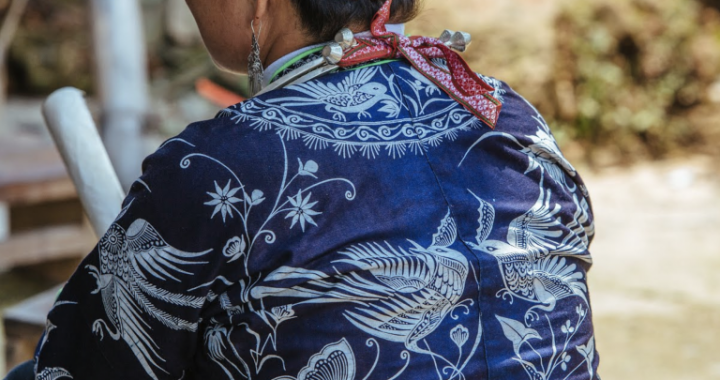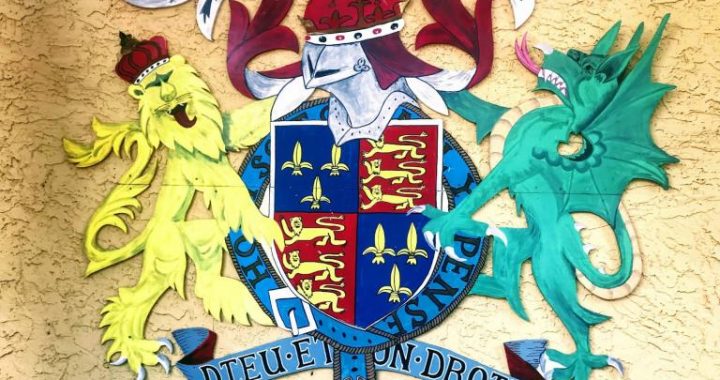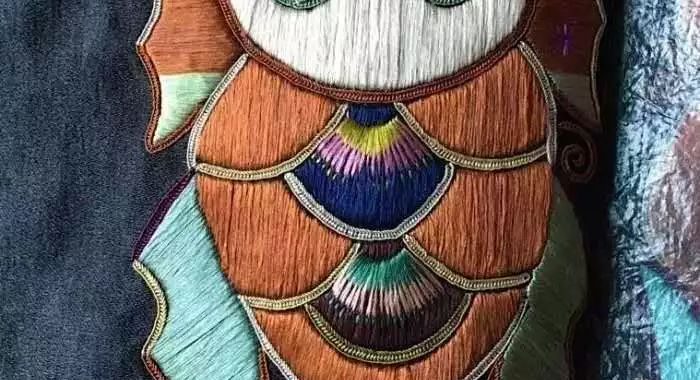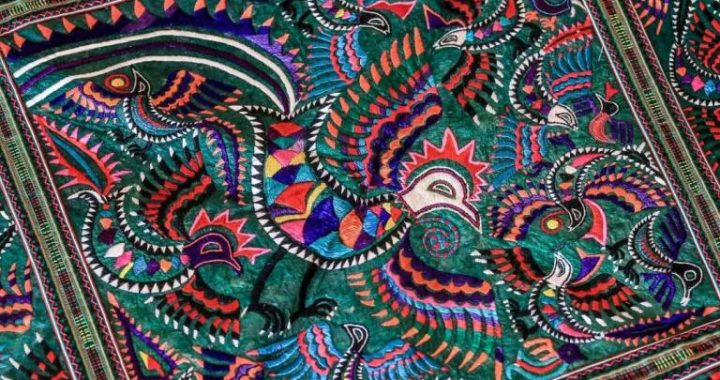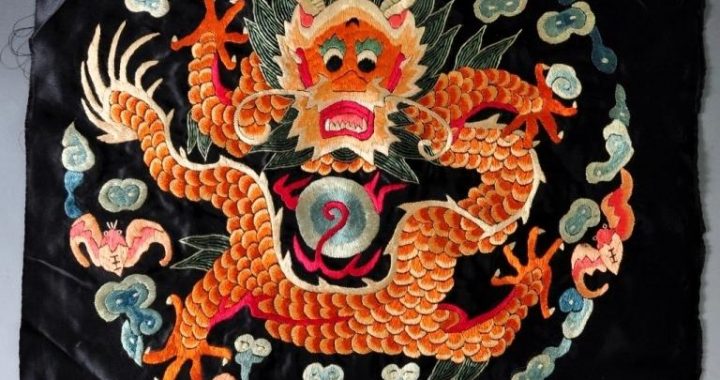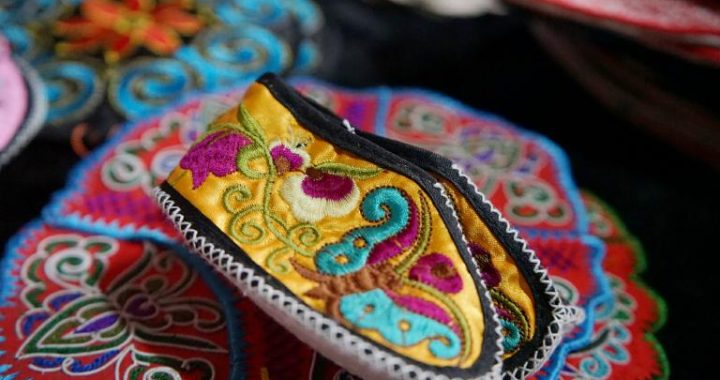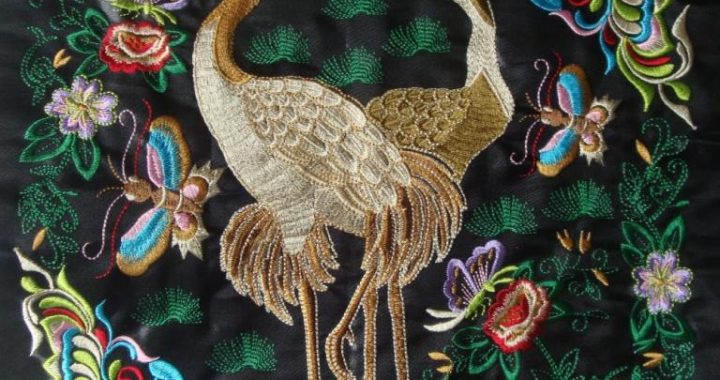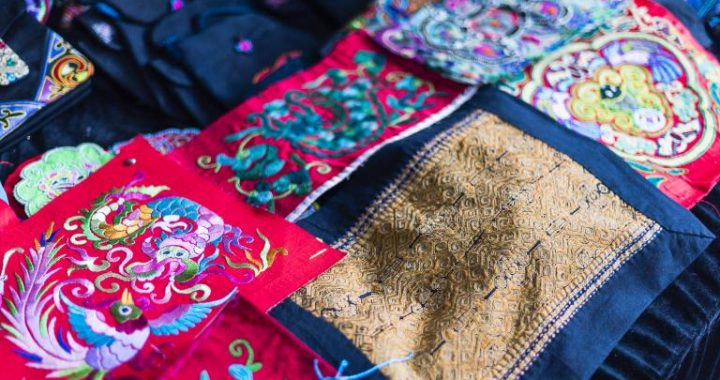Patterns of Auspicious Clouds and Animals
4 min readThe short duration of the Qin dynasty resulted in few historical records and archaeological excavations about its silk products,while that of the Han dynasty has turned out to be very fruitful.Among the excavated Han tombs,silk textiles ofWestern Han dynasty found in Mawangdui of Changsha,Hunan province number first in amount and variety,and are best preserved.Its owner was a noble lady named Xinzhui.Among her numerous funeral objects,there is a gauze gown that is 128 centimeters long,but only weighs 49 gram.It is as tender as the wing of a cicada,and can even be placed into a match box after being folded.
These rich archaeological findings generally outline the achievements of silkindustry in the Han dynasty.During this period,techniques of traditional silk products were promptly enhanced,especially of tabby damask and brocade,which wereconsidered more precious.Brocade in particular,as a polychrome patterned textile,is the most important category of silk in ancient China.To weave brocade,silk filaments are dyed into five or so different colors before they are densely woundonto the loom,usually over 200 filaments within one centimeter.It is such a time-consuming and hard sledding job to weave a piece of brocade,that the cost of acomplete roll was extremely precious.(Jin),the Chinese character for brocade,also indicates its extraordinary value,as the left part means money,while the right part is the general term for silk textiles.
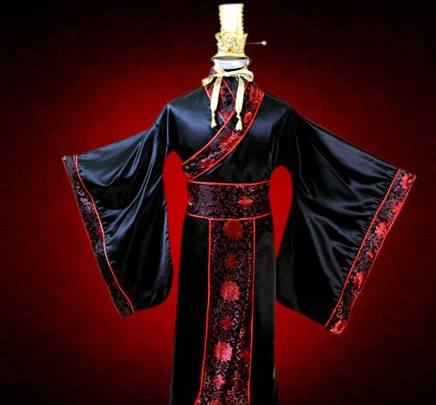
1)Auspicious Cloud Patterns
Silk products of Qin and Han boast distinctive features of their times,their expressive patterns and colors reflect the high achievements of silk production during the period.The emperors of the Qin and Han dynasties were superstitious in impetrating and pursuing an everlasting life,and they sent virgins out to the ocean seeking for immortals.The most popular story about such deeds is Xu Fu’s voyage over the sea to Japan sent by Qinshihuang for elixir.Moreover,the mansions,chariots and coffins of emperors and aristocrats were all decorated with cloud patterns,to construct the atmosphere of heaven.These beliefs and practices permeated in all kinds of artworks of the time,and were also reflected on silk textiles,especially through patterns of clouds and animals.
Cloud itself is illusory,but it helps to foster a supernatural environment.The embroidered cloud patterns excavated from Mawangdui is the most famous cloud pattern of the Han dynasty,which fell into three main categories,namely the Xinqi embroidery,Cloud-riding embroidery and Longevity embroidery.Xinqi embroidery tookthe majority among the three,featured by small and simple circular patterns,whilepatterns of the other two embroideries are relatively larger.Head of a phoenix is portrayed in flowing clouds on the Cloud-riding embroidery,as if depicting the scene of phoenix riding on cloud,while the Longevity embroidery,which is the most classic type of cloud embroidery of the period,featured compact composition and the liveliest presentation.Beside the patterns being embroidered,the names of these embroideries,such as Cloud-riding and Longevity,also reflected wish of Han Chinese for longevity and immortality.

Generally speaking,cloud patterns of this period have three major patterns:The first one is in the pattern of flowers or fringes,boasting grand scenes and free composition,represented by the brocade with characters meaning longevity unearthed in Loulan.The second is the mountain-pattern cloud,where cloud patterns are usually decorated with mountain slope,rocks or plants.The third was the ribbon-shape cloud pattern,which looks as smooth and flowing as a silk ribbon,but rarely seen in the unearthed ancient tombs.
2)Auspicious Animals
Besides being applied alone,cloud patterns were more often used as structural patterns to decorate various motifs of auspicious animals, to present scene of the heaven wreathed by ethereal clouds, where mythical animals live at ease. Theseanimals, real or imaginary, such as dragon, tiger, leopard, deer, kylin, horse, goat and crane, were all considered auspicious, and thus favored and worshipped by ancient Chinese people. Among them, there were also a great number of peculiar beasts with or without horns, whose names are now difficult to decode.
For example, dragon, the most revered legendary creature in ancient China, took the first place in the sequence of “four immortal creatures”. Moreover, dragon wasalso believed to be an essential mount to take human beings up to the heaven, and even Emperor Wu of Han once dreamed of riding on a chariot drawn by six dragons and ascended to heaven. Therefore, winged dragons was the most frequent animal motif on silk textiles, lively portrayed with a long head, thin neck, opening mouth and stretching feet.
Tiger: Ancient Chinese people considered tiger the king of beasts. It symbolized courage and majesty, and it was believed to be the mount of immortals. In the Han dynasty white tiger was one of the “four immortal creatures”and the ruler of the west. In the animal patterns on silk, tiger images usually appeared together with dragon, and sometimes they were portrayed with wings.
Deer: Deer in Chinese(Lu) is homophonic to wealth, therefore it was believed to be symbol of longevity, wealth and good luck, while white deer was considered even more auspicious. Many deer on silk patterns were portrayed with wings, likely to be such white deer or heavenly deer.
Kylin: It is a legendary creature of benevolence and was believed to have the body like a deer, tail of an ox, hooves of a wolf, and a horn on its head which is its most significant feature. The images of kylin were found in several pieces of brocade unearthed in Loulan, all with a distinctive horn on their heads. Luan bird: It is a mythical bird of auspice, looking like a cock, but with brighter feathers.
Crane: Ancient Chinese people believed that it symbolized longevity, and was a mount to take immortals to the heaven, thus it was a popular motif on silk textiles as wel1.
